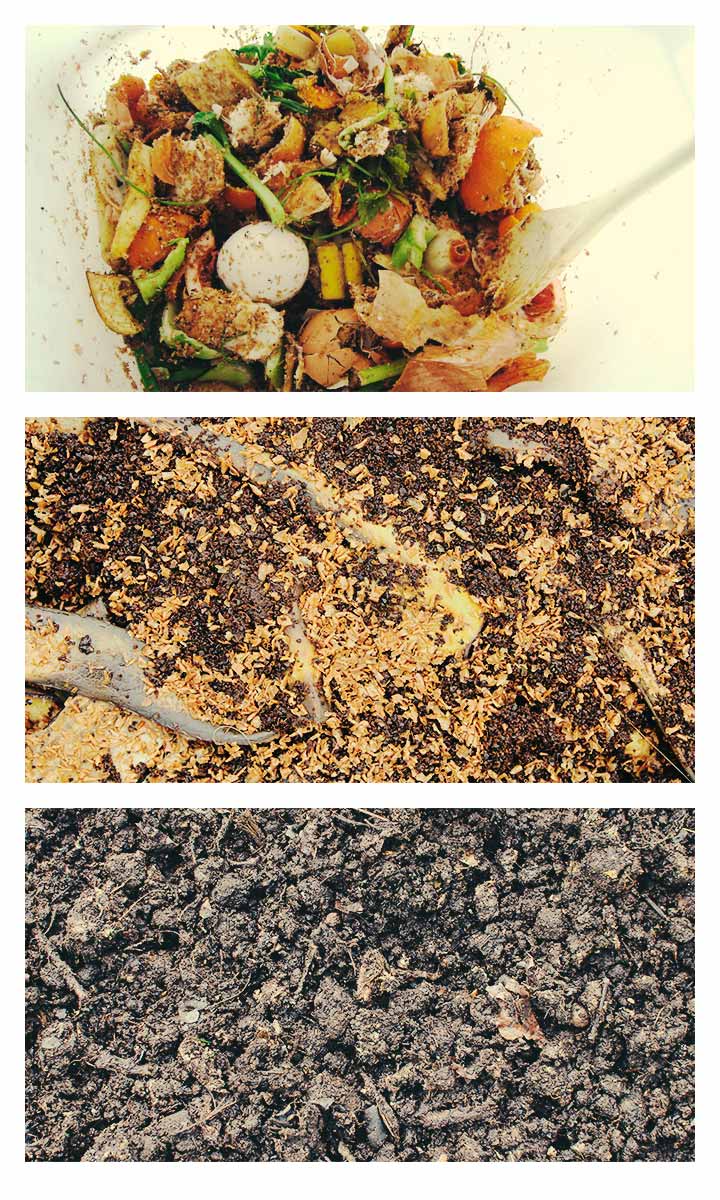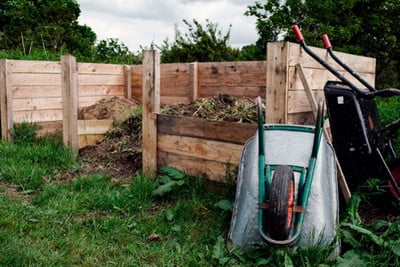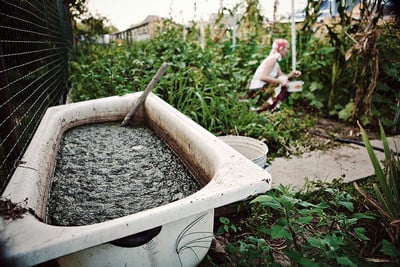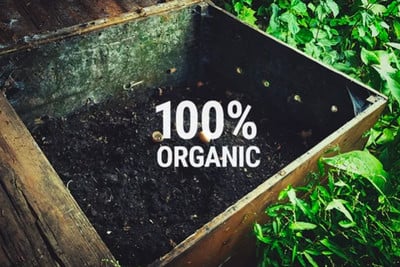.

Is Bokashi A Good Source Of Nutrients For Cannabis Plants?
Bokashi can turn kitchen waste into nutrition for your cannabis plants with little mess and no odour. This Japanese composting method uses beneficial microorganisms to ferment different types of food waste and turn them into an environmentally friendly fertiliser. Learn what bokashi is and how to use it in your cannabis garden.
Cannabis growers are always on the lookout for new growing techniques. Could bokashi help you achieve your best harvest ever? Read on to learn about this unique Japanese soil amendment.
WHAT IS BOKASHI?
Bokashi is a Japanese word meaning “fermented organic matter”. It’s a composting technique derived from ancient methods of fertilisation based on anaerobic fermentation processes catalysed by mixtures of particular microbes[1].
Bokashi leverages the principles of inoculated fermentation, just like beer. Grain fermented[2] by bacteria named effective microorganisms (EM) is normally used to start the organic waste transformation process.
Bokashi is today appreciated by organic growers as a sustainable soil amendment that supports great results, increasing plant health and yield without using chemical pesticides and fertilisers. Many cannabis growers have started to prepare their own bokashi[3] as well, using it alone or in a compost mix to leverage all of their home and garden waste's fertilising potential.
IS BOKASHI BETTER THAN COMPOSTING?
Bokashi might be considered better than regular compost as it contains more nitrogen, one of the most important nutrients for the cannabis vegetative growth phase[4] and the most likely to be scarce in regular soil.
However, the most evident and immediate advantage of bokashi is its velocity. Traditional food and gardening waste composting techniques take at least three months to prepare, and a lot of the fertilising potential of the raw material is dispersed into the environment.
With bokashi, it takes only a matter of weeks to create a concentrated fertiliser for your plants, with no oxidation dissipating organic matter, methane, and carbon dioxide into the atmosphere[5]. Moreover, this fermented material is an excellent add-on to a worm composting bin.
Bokashi composting requires less space than regular composting simply because it does not require air in the composting bin. The use of the airtight bokashi container also allows for easier indoor composting without odour and unwanted insects.
Bokashi requires a specific airtight bucket with holes on the bottom so liquid produced during fermentation can drain off[6]. This byproduct is itself a good fertiliser for directly watering plants, and it can even be diluted to use as a foliar spray.

ARE THERE ANY CONS?
Yes. Since regular compost has already undergone significant decomposition, more nutrients are immediately available to the roots. On the other hand, bokashi ferment has not started the decomposition process yet, thus most of its nutrients are still tied up in large molecules, and roots cannot absorb them quickly.
That’s why bokashi can’t be applied to the surface of the soil. It must either be buried or added to a traditional compost. While the fermentation process is quick, the final decomposition in soil is not, thus it’s not too clear when bokashi’s nutrients become available to your plants’ roots.
No homemade fertiliser—compost and bokashi ferment included—can be assumed to be pathogen free. Both techniques could in fact transfer pathogens to the garden, even if this is probably not the most likely cause for a cannabis crop infestation.
We must also consider that bokashi does not work well with the carbon-rich material found in gardens. Composting is better at getting rid of the type of organic waste generated by most gardens, so bokashi does not substitute the composting bin in most organic farming.
Finally, we need to remember that, aside from a little loss of liquid content, bokashi weighs the same before and after the fermenting process, while compost significantly reduces in weight. The practical result is a larger amount of ferment needed to provide the same level of nutrients as compost.
MAKING BOKASHI FERMENT AT HOME
The bokashi process allows growers to feed their plants using only kitchen and garden waste, including meat and dairy, which are not suitable for other forms of composting.
You can buy kits to help you get started with bokashi, or you can make your own by following one of the bokashi bran recipes you can find online. Complete procedures and ingredients, together with some pro tips, can be found as well.
Some gardeners grow their own EM, but the exact microbial content of a homemade bacterial inoculation is hard to estimate. Buying your microbes from a qualified reseller ensures you get the three fundamental types of lactic acid bacteria, yeasts, and photosynthetic bacteria needed for a complete bokashi process.
To start your ferment, put your kitchen scraps in the bokashi bin and cover them with some EM inoculated roughage such as wheat bran or sawdust. As you throw more food scraps in the bin, also add more bran. Just use a bit of caution in selecting what to put in your airtight bokashi container: You should avoid rotten food, large bones, shells and shellfish, synthetic fabric, milk, and other liquids.
You should also drain food scraps so they are not too wet, but be prepared; we mentioned before that you’ll have to deal with some liquid draining from the bottom of the bin. Store it properly or just use it in your next nutrients mix.
Once the bokashi bucket is full, keep it closed and allow to ferment at room temperature for 2–3 weeks. After this fermenting phase, bokashi is ready to complete its controlled biodegradation in the soil.


BOKASHI AND CANNABIS
Bokashi activates microbial synergy in soil, resulting in increased availability of carbohydrates, enzymes, amino acids, and organic acids for your plants’ roots. This is exactly what many specialised nutrition and root stimulation products do. However, just like any cannabis nutrient solution or additive, don’t expect magic.
Studies on bokashi are almost nonexistent. Some believe bokashi could revolutionise weed growing, and maybe agriculture in general, yet there is poor scientific evidence of its benefits to yield, except in some individual situations. However, recycling your kitchen waste and producing sustainable nutrients for your plants doesn’t hurt us or the planet.
HOW TO USE BOKASHI
After amending your soil with bokashi, just transplant your young cannabis plant and water it. This fermented compost is a powerful source of slow-release nutrition, and it will attract worms, fungi, bacteria, and other beneficial organisms[7]. For a stronger fertiliser, you can add other organic amendments to increase the natural nutrient levels of your bokashi according to the NPK needs of your plant.
As we said, when bokashi is introduced to your garden, it develops networks of microbes within the soil. That’s why a white film can be seen on the surface. This is the growth of bacterial filaments known as Actinomycetales, which are good for the soil and your plants! These microorganisms give the soil its earthy smell and are common microbes in healthy compost. When this kind of microbial life is high, you need fewer chemicals to satisfy your plants!
- https://www.semanticscholar.org/paper/EFFECTIVE-MICROORGANISMS%3A-A-REVIEW-OF-THEIR-AND-Ezeagu-Omotosho/bbbfc8652d7526f9b0a3255271bd0d063b630f02
- https://www.semanticscholar.org/paper/Fermentation-(-Bokashi-)-versus-Composting-of-Waste-Bosch-Hitman/6aa105baba368df90766e5719fcf3b661b364ae9
- Analysis of the nutrient composition, efficacy, and sustainability of bokashi fertilizers | Wellesley College Digital Repository https://repository.wellesley.edu
- https://www.researchgate.net/publication/361722608_Effect_of_Bokashi_Fertilizer_on_Increasing_Soil_Nutrients_and_Growth_of_Medicinal_Plants
- Bokashi as an Amendment and Source of Nitrogen in Sustainable Agricultural Systems: a Review. | Journal of Soil Science and Plant Nutrition https://link.springer.com
- https://www.researchgate.net/publication/350999117_Optimization_of_Bokashi-Composting_Process_Using_Effective_Microorganisms-1_in_Smart_Composting_Bin
- https://www.semanticscholar.org/paper/On-Farm-Conversion-of-Cannabis-Sativa-Waste-Biomass-Olson-Neher/338cd3948103a85a9bf503a51adbfcddb9534e07








































